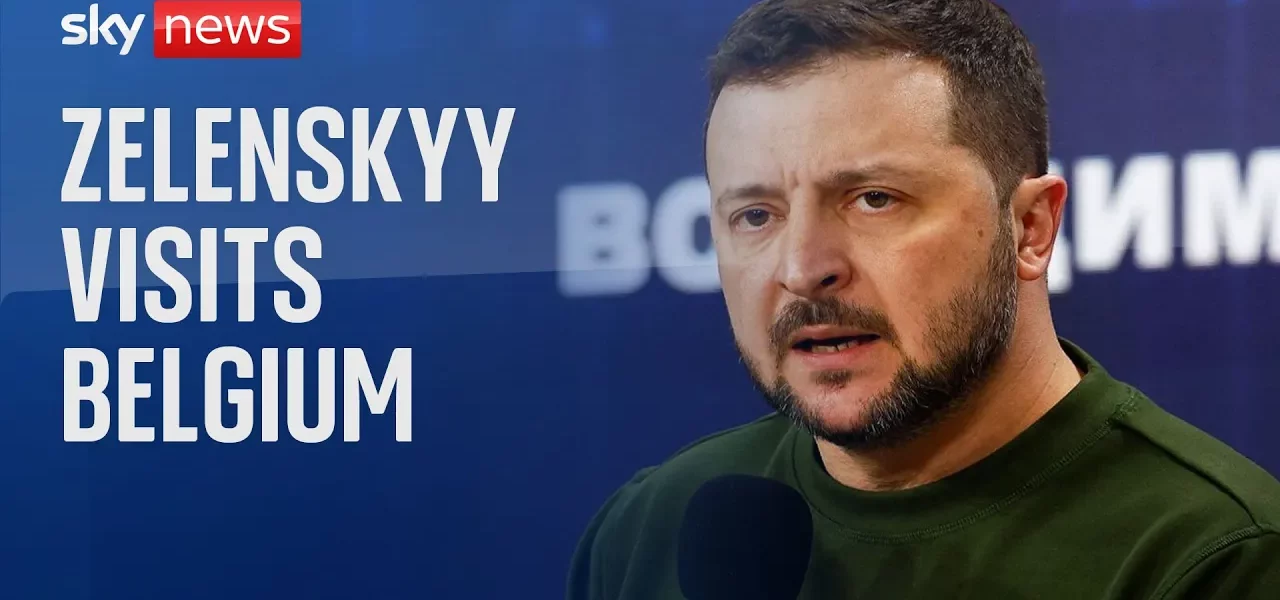Military Support for Ukraine: Current Discussions and Implications

This article delves into the critical discussions surrounding military support for Ukraine, the implications of EU defense readiness, and the evolving stance of member states on arms supply amidst ongoing geopolitical tensions.
Introduction
As the conflict in Ukraine continues, the European Union and NATO member states are grappling with the urgency of providing military support to Ukraine. With discussions ongoing about the allocation of billions in funding and the legal frameworks necessary for support, the stakes are high. Delays in military assistance can have dire consequences, impacting both human lives and critical infrastructure. This article explores the key points of contention, the strategic importance of military readiness, and the evolving landscape of arms supply to Ukraine.
Current Status of Military Support
Recent discussions within EU councils have highlighted a substantial sum of €6.6 billion that is pending allocation for Ukraine’s military support. This funding, however, is entangled in a complex web of legal instruments that require approval from member states.
Importance of Unanimity
For military support to be enacted, there needs to be a consensus among member states. Unfortunately, this unanimity has been elusive for several months, hindering timely assistance to Ukraine. Delays in military support translate into real-world consequences, including loss of life and increased infrastructure damage.
Consequences of Delayed Support
- Increased casualties among Ukrainian forces.
- Worsening damage to critical infrastructure.
- Potential for greater territorial losses for Ukraine.
Windfall Profits and Resource Allocation
The EU has initiated discussions on utilizing windfall profits for military support, with 90% of these funds earmarked for the European Peace Facility. This strategic move aims to bolster military assistance without causing further blockages in resource allocation.
Training Initiatives for Ukrainian Forces
The EU’s training mission has successfully trained over 50,000 Ukrainian soldiers, with ambitions to expand this number to 60,000 by the end of the summer. Adapting training programs to meet the evolving needs of Ukraine’s military is crucial for enhancing their operational capabilities.
Proposed Training within Ukraine
There is an ongoing debate about the feasibility of conducting training missions directly within Ukraine. This approach could provide tailored training in real combat scenarios, although it raises concerns about the presence of European military personnel on Ukrainian soil.
Enhancing European Defense Readiness
As tensions escalate, the concept of defense readiness has become increasingly prominent in EU discussions. The need for a robust defense posture is more apparent than ever, with member states recognizing the necessity of investing in joint defense capabilities.
The Triad of Defense Spending
To achieve enhanced defense readiness, three key approaches must be integrated:
- Spend better: Optimize existing resources and funding.
- Spend together: Foster collaboration among member states.
- Spend more European: Increase reliance on European suppliers for military equipment.
Dependence on Non-European Suppliers
Since the onset of the conflict, a significant portion of military acquisitions—approximately two-thirds—has been sourced outside the European Union. This dependency highlights the urgent need for a self-sufficient European defense industry.
European Defense Industrial Strategy
One of the key discussions during recent meetings was the need to strengthen the Ukrainian defense industry within the EU’s industrial ecosystem. By financing Ukrainian defense directly, the EU can better align military production with the needs of Ukraine.
Future Financing for Security and Defense
The next EU council meeting will address funding proposals for security and defense efforts, emphasizing the importance of defining the financial requirements before allocating resources.
Building Partnerships for Global Security
As geopolitical challenges evolve, the EU is committed to reaching out to international partners. The upcoming Schuman Forum will bring together defense ministers from over 60 countries to discuss shared challenges and forge collaborative solutions.
Regional Security Challenges
Current threats span from the Black Sea to the Red Sea, necessitating a unified global response. Key areas of focus include:
- Energy security and resource management.
- Technological advancements in defense capabilities.
- Food security as a driver of conflict.
Conclusion
The ongoing discussions regarding military support for Ukraine underscore the complexities of international defense collaboration and the critical need for timely action. As the EU navigates the challenges of resource allocation and defense readiness, member states must work together to enhance Ukraine’s military capabilities. The stakes are high, and a unified approach will be essential in addressing both immediate and long-term security challenges.
For further insights on military support and European defense strategy, visit our related articles on European Defense Initiatives and Military Training in Conflict Zones.
“`




